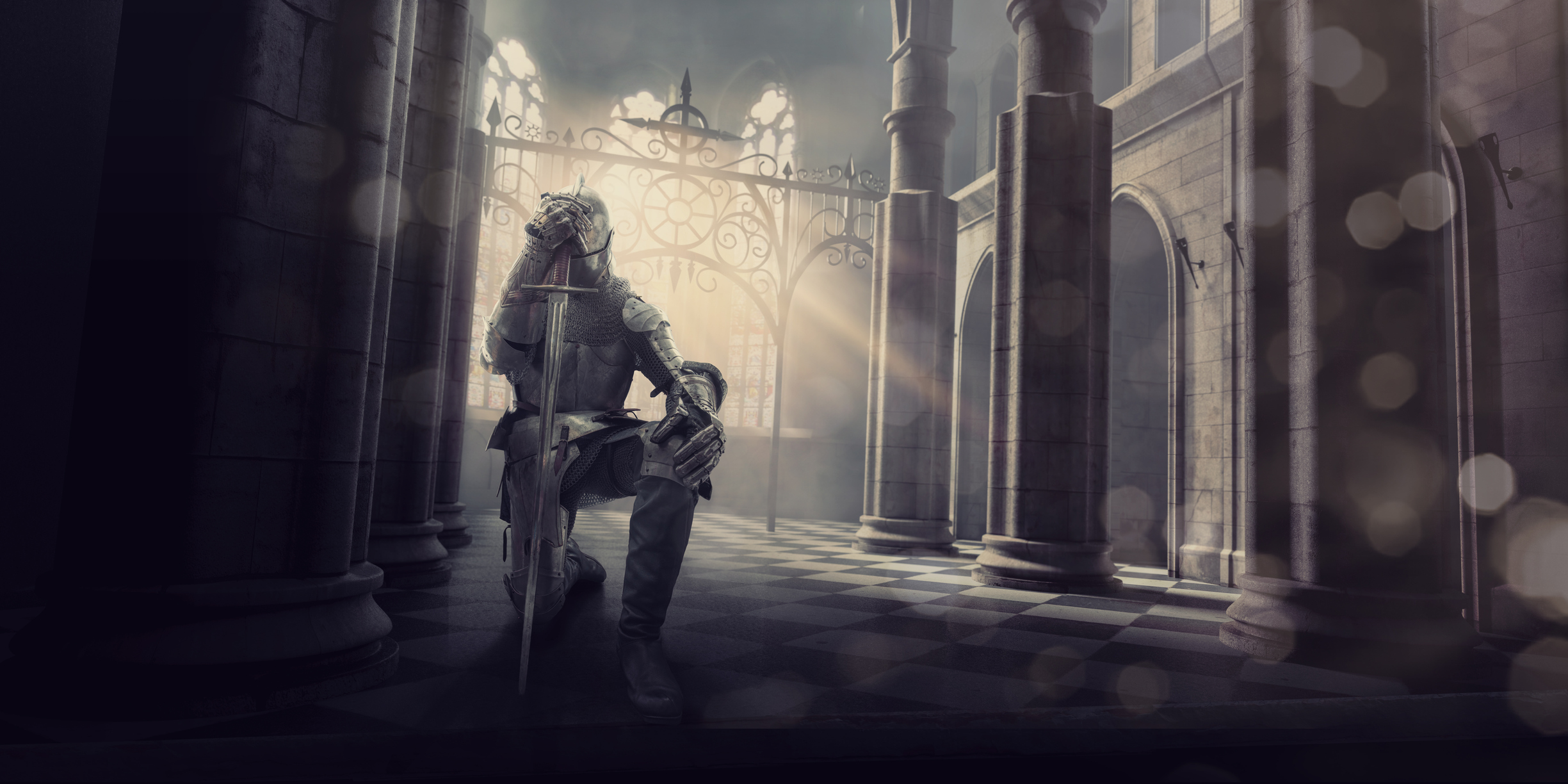
The Crusades
On February 8, 1250, the last major battle of the campaigns known as the Crusades began in northern Egypt about 75 miles outside Cairo. On that day, King Louis IX of France, with the full support of Pope Innocent IV, led the Seventh Crusade against the Moslems at Mansura. Louis believed that to reclaim Jerusalem, the Ayyubid dynasty founded by Saladin and at that time controlling the Holy Land had to be defeated. However, just three days later, Louis’ forces had been decimated and he was captured. The Battle of Mansura effectively ended any major attempt to reclaim Jerusalem. In 1291, the Moslems captured Acre, the last Christian city in the Holy Land, and killed all defending Templar and Hospitalier knights, along with all men, women, and children in the city.
How and why did the Crusades begin? To understand these holy wars, we must first look at the city that was the focus of this 200-year war. Jerusalem is the Holy City for both Judaism and Christianity. For Jews, it is the land of the ancient Israelites, the capital of the kingdom of Judah; it is the city of King David, Solomon, and the First Temple where the Holy of Holies housed the Ark of the Covenant containing the Ten Commandments. For Christians, in addition to the Old Testament significance, it is the site of the Passion, the city Jesus triumphantly entered and then was condemned to death; it is the site of the Church of the Holy Sepulchre, built over Golgotha and the tomb where Jesus was laid.
However, Jerusalem is also a holy city to Moslems, along with Mecca and Medina. Islam, like Christianity and Judaism, is an Abrahamic religion, tracing its roots back to Ishmael, the son of Abraham. (Isaac, Abraham’s other son, is considered the father of the Jewish people). For Moslems, Jerusalem—specifically, the Dome of the Rock—is the site of the Foundation Stone, where Abraham was willing to sacrifice Isaac (Ishmael in Islamic tradition). It is also where Moslems believe that Muhammed met with Abraham, Moses, and Jesus, and ascended to heaven.
Jerusalem has witnessed more violence during its history than most other cities in the world. Fully destroyed by the Babylonians, it was rebuilt and then partially destroyed by both the Seleucids and Romans. It has endured numerous sieges, attacks, and revolts and has fallen to such world powers as Macedon (Alexander the Great), the Roman Empire, the Persian Empire, the Ottoman Turks, and the British, Arabs, and Israelis. But it was between 1095 and 1291 that religious fervor erupted between the two great faiths of Christianity and Islam, and the battle for Jerusalem and other sites in the Holy Land was on.
The Church of the Holy Sepulchre had been commissioned by Constantine the Great, with building begun in 326. Even though Moslem forces under Caliph Omar had captured Jerusalem in 638, the Holy Sepulchre had continued to function as a Christian church. However, when Al-Hakim, known as the Mad Caliph of Cairo, came to the throne in 996, he began persecuting Christians. He banned pilgrimages; forbade Epiphany and Easter celebrations, and outlawed the use of wine and bells. He instituted a Law of Differentiation, ordering Christians to wear an iron cross and Jews a wooden calf necklace. Then, in 1009, he ordered the destruction of the holiest site in Jerusalem for Christians, the Church of the Sepulchre.
By 1095, the destruction of the church and the atrocities suffered by Christians in Jerusalem were well known across Europe. While history can point to other contributing factors for the rise of the Crusades, it was Pope Urban II’s plea to Christians throughout Italy and France that ignited the First Crusade fervor: “Enter upon the road to the Holy Sepulcher…. Jerusalem is a land fruitful above all others, a paradise of delights. That royal city, situated at the center of the earth, implores you to come to her aid.”
Comprised of mostly French forces, the Crusaders captured Jerusalem four years later, on July 15, 1099. They also conquered the most important centers of the Holy Land such as Bethlehem, Nazareth, and Capernaum. The Holy Land was then divided into Christian states, which survived for over one hundred years. But the quest to reclaim other cities of biblical importance, such as Damascus would lead to a series of defeats for the Crusader states. In 1187, the Moslem general Saladin recaptured Jerusalem. New Crusades to win it back failed. In the Third Crusade, Richard I of the Lion Heart, King of England, and the Emperor of the Holy Roman Empire, Frederick Barbarossa, led their armies into war. However, Barbarossa died in route to the Holy Land, and the Crusaders failed to retake Jerusalem. The Crusader states were gradually overcome, but it was more than a century after the fall of Jerusalem that the last Christian stronghold, Acre, fell, in 1291.
Today, Jerusalem remains a holy city for the world’s three great faiths of Christianity, Judaism, and Islam. The city is still considered one of the most volatile areas in the world.
